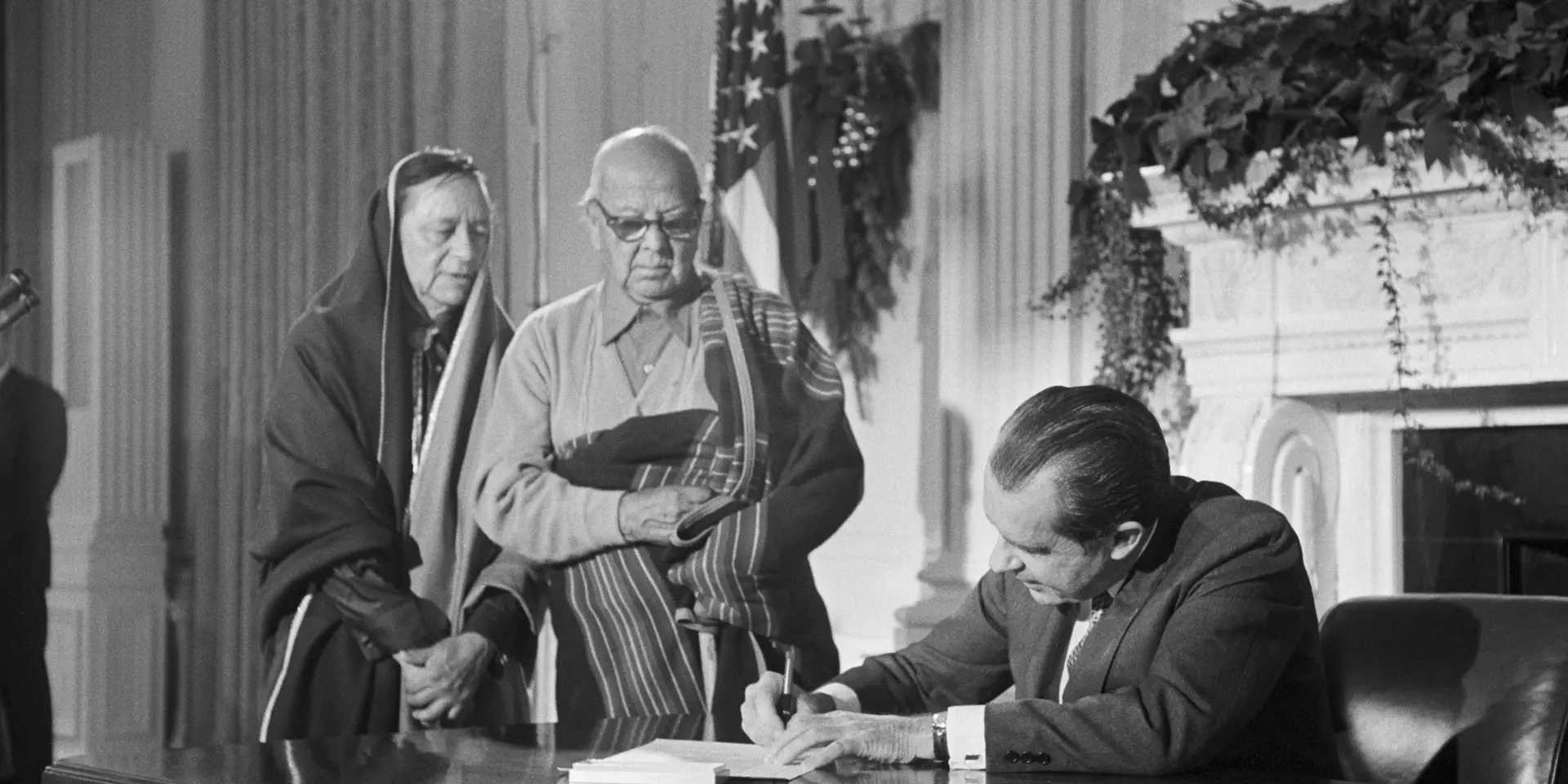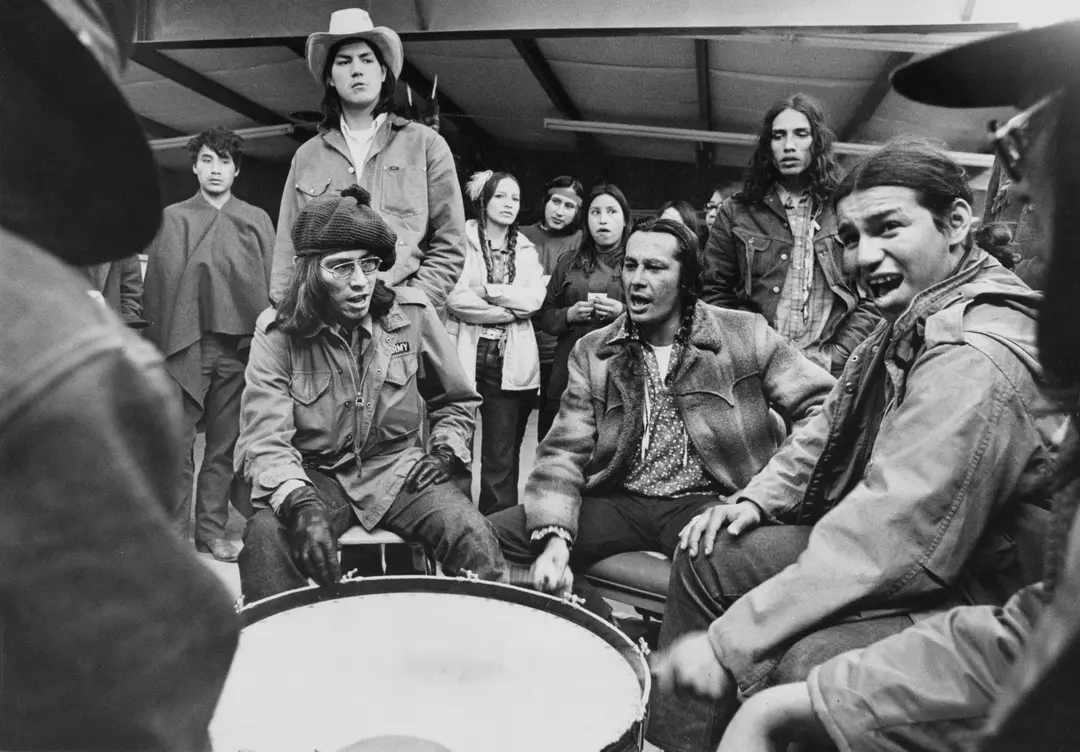Throughout U.S. history, Native American tribes faced devastating policies aimed at dismantling their sovereignty and cultures. Yet, amid this grim legacy, one U.S. president, often remembered for his scandals, emerged as a pivotal ally for Native American rights: Richard Nixon. While his administration is best known for the Watergate scandal, Nixon’s contributions to Native American communities were profound and far-reaching, reshaping federal Indian policy and supporting tribal autonomy in ways no other president had before.
A President Richard Nixon Who Listened to Native Voices
Richard Nixon signed over 50 legislative measures to promote Native American self-determination, more than any president before or since. His efforts reversed centuries of oppressive government policies that sought to undermine Native governance. Nixon not only listened to tribal leaders but acted on their demands for self-governance, education reform, and land restoration. His presidency marked a turning point in Native American relations with the U.S. government.

Returning Sacred Lands to Native Tribes
One of Nixon’s most notable achievements was returning sacred land to Native tribes, starting with the historic Blue Lake, which he returned to the Taos Pueblo in New Mexico. This marked the first time in more than 200 years that the U.S. government returned tribal land, setting a precedent for future restitutions. Nixon’s administration also returned Mount Adams to the Yakama Nation and facilitated the Alaska Native Claims Settlement Act, which returned 45.5 million acres to Alaska Native people and awarded nearly a billion dollars in compensation.
Championing Native Self-Determination
Nixon’s presidency saw the end of the destructive “termination” policy, which sought to dissolve tribal governments and reservations. Instead, Richard Nixon advocated for self-determination, a policy that returned control over governance to Native tribes, allowing them to manage their own affairs with federal support. His push to reverse the termination policy was instrumental in empowering tribes to regain autonomy, leading to the passing of the Indian Self-Determination and Education Assistance Act.
The Indian Education Act: A Milestone in Native Education
Under Richard Nixon’s leadership, Congress passed the Indian Education Act in 1972, which provided critical funding for schools on reservations and scholarship opportunities for Native American students. This act marked a significant step toward addressing the educational inequities faced by Native communities and laid the groundwork for future reforms that would further enhance educational opportunities for Native youth.
The Unlikely Origins of Nixon’s Passion for Native Rights
Richard Nixon’s empathy for Native American issues can be traced back to his college days. At Whittier College in the 1930s, Nixon formed a deep bond with his football coach, Wallace “Chief” Newman, a Luiseño Native American. Newman became a mentor to Nixon, instilling values of perseverance and resilience, which would later shape the president’s perspective on marginalized communities. Nixon often spoke fondly of his coach, crediting him with helping to shape his views on fairness and justice.
Nixon’s Response to Native Activism: A Time of Unrest
During Nixon’s presidency, Native activism surged. One of the most significant events was the 1969 occupation of Alcatraz Island by a group calling itself the “Indians of All Tribes.” The group demanded the island be returned to Native control. Rather than resorting to force, Richard Nixon’s administration opted for negotiation, allowing the protesters to voice their grievances. The occupation lasted for 19 months before peacefully ending.
In 1972, Native American activists organized the Trail of Broken Treaties, a cross-country caravan that brought hundreds of protesters to Washington, D.C., where they demanded attention to a range of issues, from broken treaties to systemic racism. When the protesters occupied the Bureau of Indian Affairs (BIA) building, Nixon again chose diplomacy, dispatching his aides to negotiate and address their demands. Although tensions rose, Nixon’s administration sought peaceful resolutions.

Wounded Knee and the Struggle for Justice
Richard Nixon faced his greatest challenge in 1973 during the 71-day occupation of Wounded Knee, South Dakota, where members of the American Indian Movement (AIM) clashed with federal forces. The site of the tragic 1890 massacre of Lakota Sioux, Wounded Knee became a flashpoint for Native activism. Nixon’s administration, while initially supportive of peaceful resolutions, found itself caught in a volatile situation. Though the standoff ended in bloodshed, Nixon’s team worked to negotiate a settlement, marking a complex chapter in his administration’s approach to Native American protests.
Nixon’s Legacy in Native American Policy
Though Nixon’s presidency ended in scandal with his resignation in 1974, his contributions to Native American rights remain an enduring part of his legacy. His policies helped restore tribal sovereignty and laid the foundation for modern U.S.-tribal relations. The Indian Self-Determination and Education Assistance Act, signed into law by President Gerald Ford in 1975, is a direct result of Nixon’s advocacy. This landmark law established the framework for tribal self-governance, allowing tribes greater control over their affairs while maintaining federal support.
John Farrell, Richard Nixon’s biographer, noted that Nixon’s push for Native sovereignty made him “an honored figure on many Indian reservations.” His efforts to reverse harmful policies and restore dignity to Native tribes have earned him a unique place in history, one that is often overshadowed by other aspects of his presidency but remains crucial to understanding his impact on American Indian communities.
Final Thoughts
Richard Nixon’s commitment to Native American rights was both unexpected and groundbreaking. While his presidency is often defined by the Watergate scandal, Nixon’s enduring contributions to Native American sovereignty, education, and land restitution stand as a testament to his belief in self-determination for all peoples. His legacy in this area continues to influence U.S.-Native relations today, reminding us of the complex and multifaceted nature of leadership.